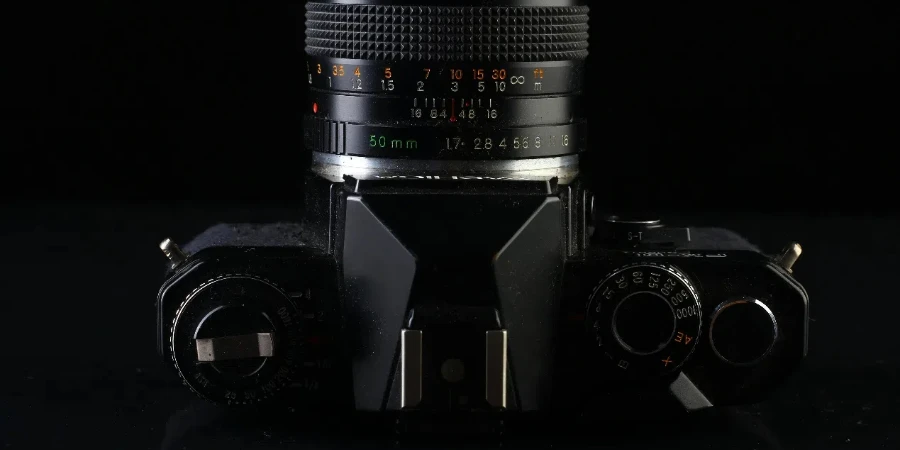In 2024, the global telephoto lens market witnessed remarkable growth, driven by advancements in smartphone photography and AI-enhanced imaging. As businesses gear up for 2025, understanding the dynamics of telephoto lens selection is crucial for wholesalers, retailers, and purchasing professionals aiming to capitalize on this expanding market.
This article delves into essential factors influencing telephoto lens choices for business buyers, ensuring they stay ahead in the competitive landscape.
Table of Contents:
– Telephoto Lens Market: A Comprehensive Overview
– Key Factors When Selecting a Telephoto Lens
– Types of Telephoto Lenses and Their Applications
– Latest Technology Features in Telephoto Lenses
– Rounding up
Telephoto Lens Market: A Comprehensive Overview
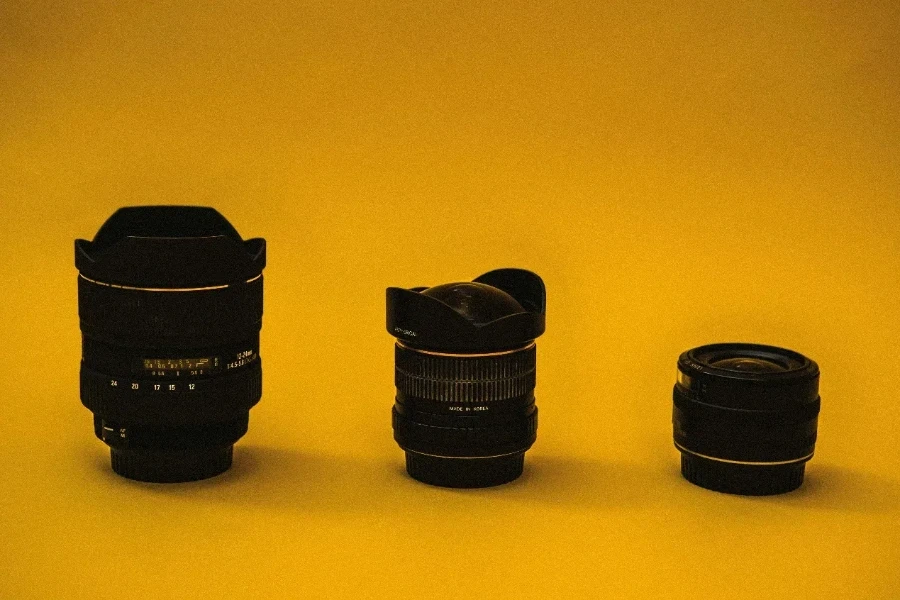
Market Overview
The global telephoto lens market is set for significant growth from 2025 onwards. Statista projects that the market for digital cameras, including telephoto lenses, will reach USD 11.13 million by the end of 2024. This market is anticipated to grow at a CAGR of 5.81% from 2024 to 2029, reaching an estimated USD 14.76 million by 2029. China plays a major role, expected to generate USD 1,651 million in 2024, with user penetration rising from 6.3% in 2024 to 8.1% by 2029.
In terms of volume, the telephoto lens market is linked to the spectacle lenses industry, predicted to reach 0.7 billion pieces by 2029, with a volume growth of 0.8% in 2025. The United States leads in revenue, with an estimated USD 13,750 million in 2024, highlighting the market’s significance in consumer electronics.
The demand for telephoto lenses is increasing due to the need for high-quality imaging in wildlife photography, sports, and astrophotography. This demand is fueled by technological advancements and the growing use of telephoto lenses in smartphones and digital cameras.
Detailed Market Analysis
The telephoto lens market features key performance benchmarks and market share dynamics. Industry leaders like Canon Inc., Nikon Corporation, and Sony Corporation dominate by leveraging advanced optical technologies and broad product lines. Canon’s RF mount system and Nikon’s Z-mount lenses offer superior optical performance, catering to both professionals and enthusiasts.
Economic factors significantly shape the market. Rising disposable incomes in emerging economies have increased spending on high-quality camera equipment, including telephoto lenses. The popularity of visually focused social media platforms has also boosted demand for advanced telephoto lenses that capture stunning images.
Consumer preferences are shifting towards niche photography genres, such as macro and wildlife photography, driving demand for telephoto lenses with features like long focal lengths, wide apertures, and image stabilization. These features enable precise and clear photography, even in challenging conditions.
Recent innovations include TECNO’s Liquid Telephoto Macro Lens and Panasonic’s LUMIX S 100mm F2.8 MACRO lens. These products emphasize enhancing optical performance and expanding telephoto lens applications.
AI-powered imaging solutions in telephoto lenses are set to transform photography by improving image quality and offering features like scene recognition and automatic adjustments. The development of lightweight, portable telephoto lenses with features such as image stabilization and fast autofocus is gaining popularity, meeting the needs of mobile photographers without sacrificing performance.
Key Factors When Selecting a Telephoto Lens
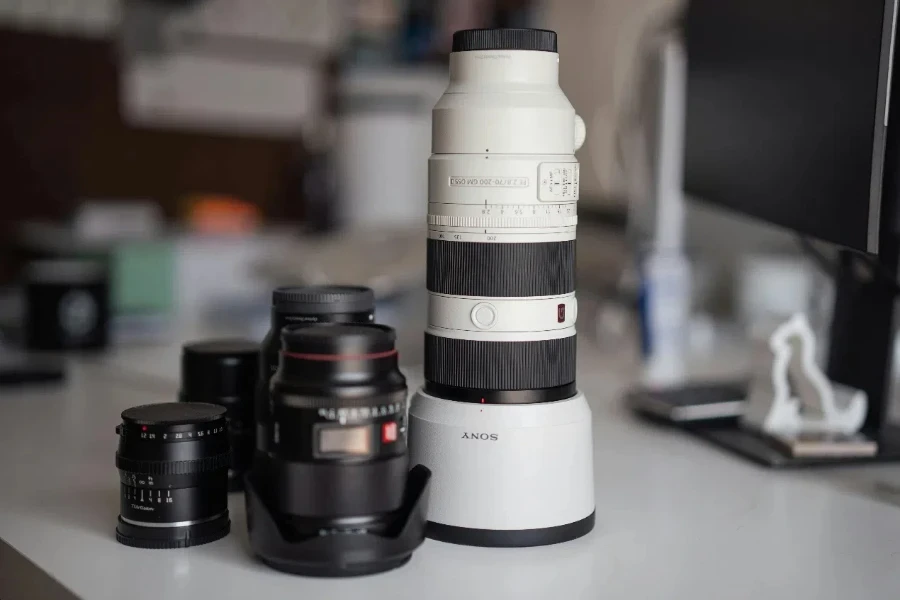
Choosing the right telephoto lens is vital for capturing distant subjects with clarity. Here are the key factors to consider:
1. Focal Length and Aperture
Focal length and aperture are crucial when selecting a telephoto lens. Focal lengths typically range from 70mm to 600mm and determine how close you can get to your subject. A longer focal length (300mm or more) is ideal for wildlife photography, while a mid-range focal length (70-200mm) suits sports or portrait photography.
Aperture, indicated by f-numbers (e.g., f/2.8, f/4), affects light-gathering ability and depth of field. A wider aperture (lower f-number) allows more light, improving low-light performance and creating a pleasing bokeh effect. For instance, a 70-200mm f/2.8 lens is versatile in various lighting conditions and produces beautiful background blur.
2. Image Stabilization
Image stabilization (IS) is essential for telephoto lenses, particularly for handheld shooting. IS reduces camera shake, which is more noticeable at longer focal lengths. Types of stabilization include Optical Image Stabilization (OIS) and In-Body Image Stabilization (IBIS).
For example, Canon’s EF 70-200mm f/2.8L IS III USM lens has a 3.5-stop Image Stabilizer, allowing slower shutter speeds without losing sharpness. Nikon’s 70-200mm f/2.8E FL ED VR lens offers up to 4 stops of Vibration Reduction, enhancing low-light usability and ensuring sharp images.
3. Build Quality and Weather Sealing
Build quality and weather sealing are crucial for durability, especially in outdoor photography. Professional-grade lenses often feature robust construction with metal barrels and weather-sealed designs to protect against dust and moisture.
For example, the Sony FE 100-400mm f/4.5-5.6 GM OSS lens combines magnesium alloy and high-quality plastics, offering a sturdy yet lightweight design. It includes comprehensive weather sealing, suitable for challenging environments like rainforests or deserts.
4. Autofocus Performance
Autofocus (AF) performance is key for capturing fast-moving subjects, like wildlife or sports. The speed, accuracy, and tracking capabilities of the AF system significantly impact your shots’ success.
Lenses like the Canon RF 100-500mm f/4.5-7.1L IS USM have advanced Dual Nano USM motors for fast and silent autofocus. The Nikon AF-S NIKKOR 200-500mm f/5.6E ED VR lens features an electromagnetic diaphragm mechanism that enhances AF accuracy during high-speed shooting.
5. Price and Budget
Telephoto lenses vary widely in price, from a few hundred to several thousand dollars. It’s important to balance your budget with the features you need. Entry-level lenses like the Tamron 70-300mm f/4.5-6.3 Di III RXD offer good performance at an affordable price, ideal for hobbyists and beginners.
On the higher end, lenses like the Canon EF 400mm f/2.8L IS III USM, priced around $12,000, cater to professionals needing top optical quality and performance.
Types of Telephoto Lenses and Their Applications
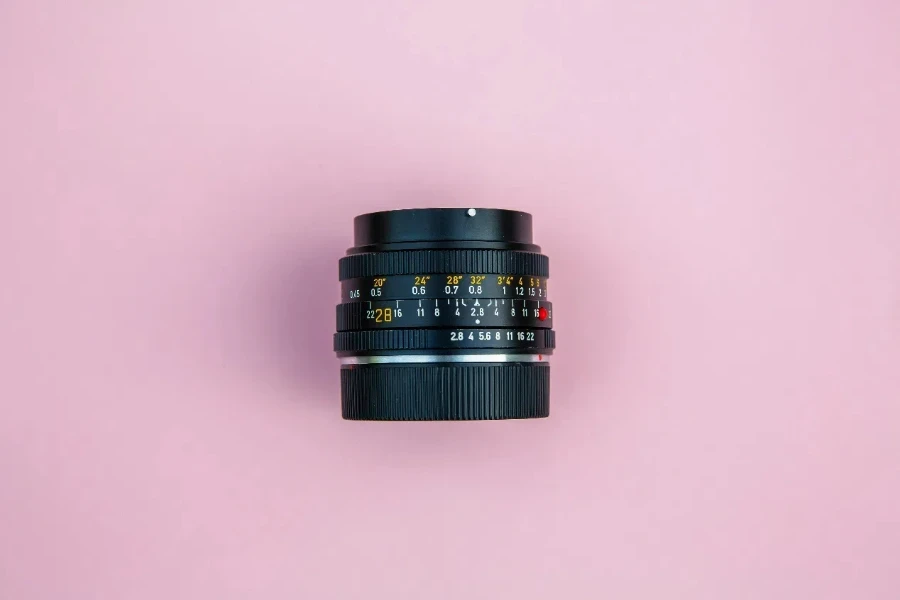
Prime Telephoto Lenses
Prime telephoto lenses have a fixed focal length, offering superior image quality, wider apertures, and faster autofocus compared to zoom lenses. They are ideal for professional sports, wildlife, and portrait photography where image sharpness and bokeh are critical.
For example, the Canon EF 300mm f/2.8L IS II USM lens provides exceptional sharpness and a fast maximum aperture, perfect for wildlife in low-light conditions. The Nikon AF-S NIKKOR 400mm f/2.8E FL ED VR lens is renowned for its sharpness and speed, often used by sports photographers.
Zoom Telephoto Lenses
Zoom telephoto lenses offer variable focal lengths, providing flexibility to shoot at different distances without changing lenses. They are versatile and convenient for travel, event photography, and situations requiring quick framing adjustments.
Examples include the Sigma 150-600mm f/5-6.3 DG OS HSM Contemporary lens, suitable for wildlife and aviation photography. The Tamron 70-200mm f/2.8 Di VC USD G2 lens is another popular choice, known for its performance, build quality, and affordability.
Super Telephoto Lenses
Super telephoto lenses have focal lengths exceeding 300mm, designed for extreme close-up shots of distant subjects. They are commonly used in wildlife photography, birding, and astrophotography.
The Sony FE 600mm f/4 GM OSS lens offers unparalleled reach and image quality, featuring advanced optics and a lightweight design for easier handling during long shoots. The Nikon AF-S NIKKOR 800mm f/5.6E FL ED VR lens provides extraordinary magnification and clarity for demanding photographic applications.
Latest Technology Features in Telephoto Lenses
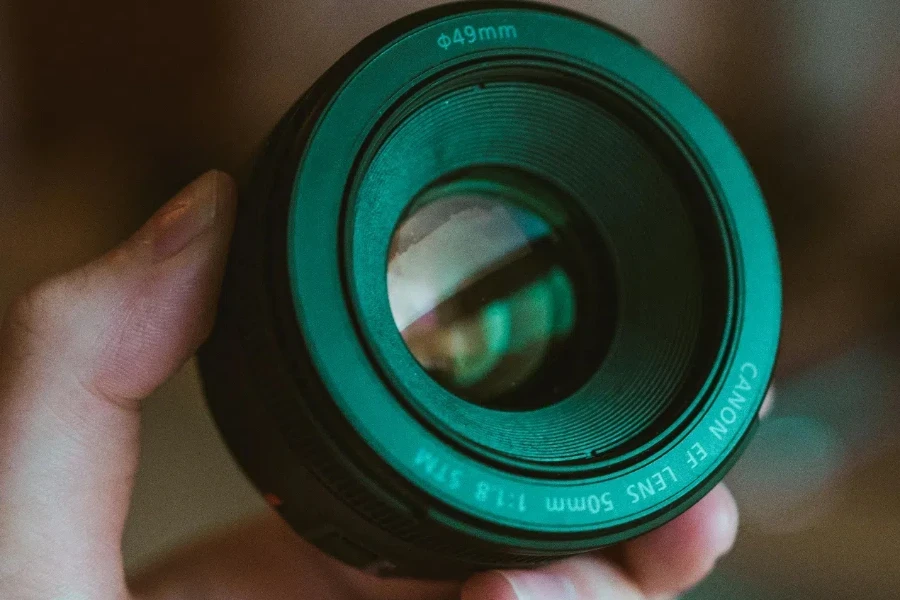
Advanced Coatings
Modern telephoto lenses often feature advanced coatings to reduce flare, ghosting, and chromatic aberrations. These coatings enhance contrast and color accuracy, especially in challenging lighting conditions.
For instance, Zeiss T* coating in the Vivo V40 5G’s telephoto lens reduces lens flare and improves contrast, resulting in clearer, more vibrant images. Nikon’s Nano Crystal Coat and Canon’s Super Spectra Coating minimize internal reflections and enhance image quality.
Image Stabilization Enhancements
Recent advancements in image stabilization technology have achieved greater stability. Dual IS systems, combining lens-based and in-body stabilization, provide superior shake reduction.
The Panasonic Lumix S PRO 70-200mm f/2.8 O.I.S. lens incorporates a Dual I.S. 2 system, working with the camera’s stabilization for up to 7 stops of correction. This allows sharp handheld shots at slow shutter speeds, ideal for low-light and telephoto applications.
Autofocus Innovations
Telephoto lenses now have sophisticated autofocus systems, including AI-driven subject tracking and eye detection. These innovations ensure precise focus on moving subjects and improve the shooting experience.
The Sony FE 70-200mm f/2.8 GM OSS II lens features Real-time Eye AF and Real-time Tracking, using AI to maintain focus on subjects’ eyes in dynamic scenes. This makes it a powerful tool for portrait and action photographers.
Rounding up
With ongoing technological advancements and evolving consumer needs, the market for telephoto lenses is poised for sustained growth and innovation.
